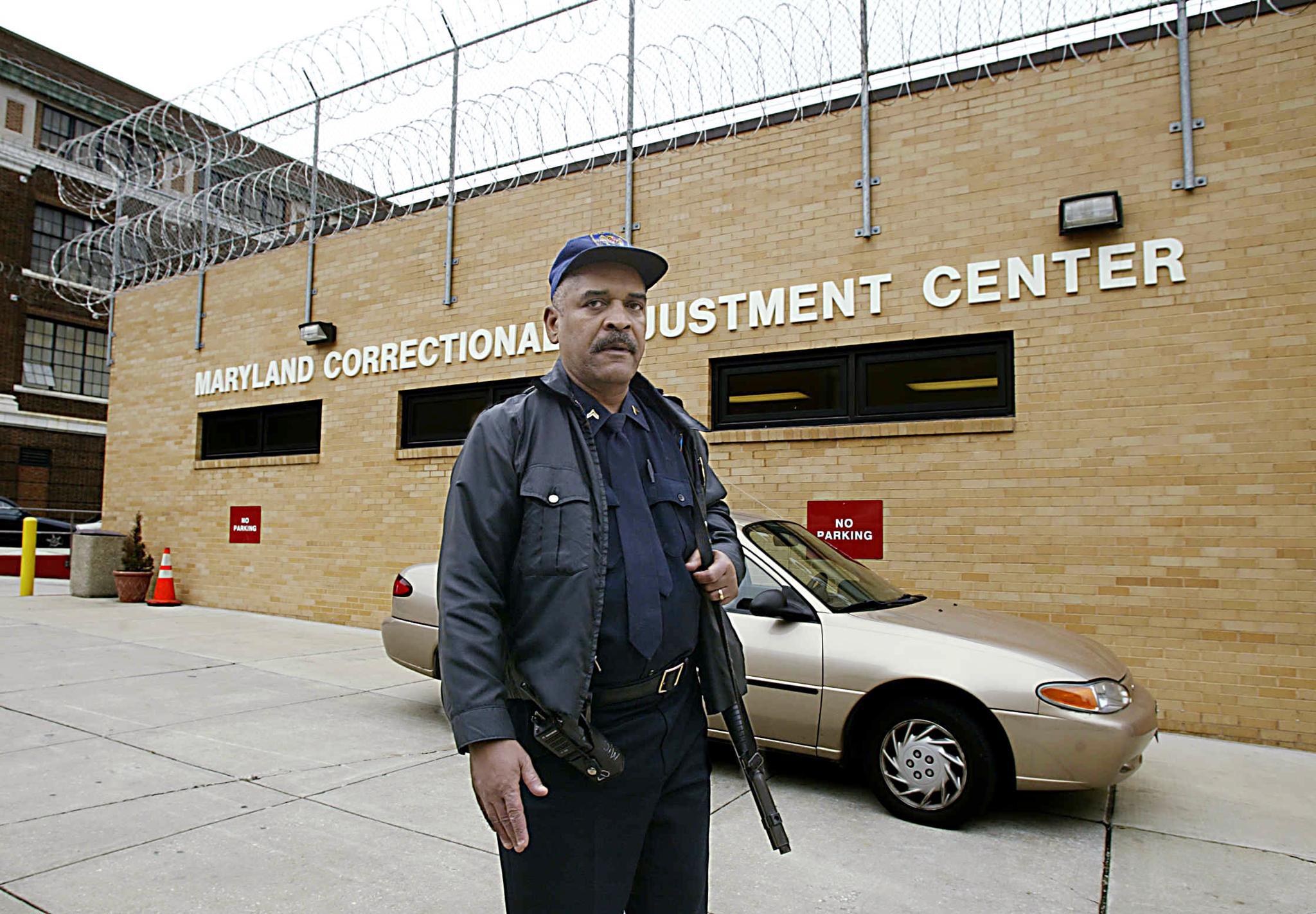Earlier this month I asked whether the Orleans Parish Prison complex in New Orleans was the worst city jail in America. There was plenty of reason to think so: Under Sheriff Marlin Gusman’s watch, conditions have deteriorated, violence is commonplace, and discipline is comically lax. Video footage showed some inmates living a Hogan’s Heroes-style existence: drinking beer, taking drugs, and leaving the jail to see the sights on Bourbon Street.
Well, the Baltimore City Detention Center is giving New Orleans a run for its money. The Washington Post reports that 13 Maryland corrections officers were recently indicted for allegedly aiding members of the Black Guerrilla Family (BGF), a national prison gang with a strong presence in Baltimore city jails, in its efforts to run a thriving drug-dealing business from behind bars. “The guards allegedly helped leaders of the Black Guerrilla Family run their criminal enterprise in jail by smuggling cellphones, prescription pills and other contraband in their underwear, shoes and hair,” explains the Post. “One gang leader allegedly used proceeds to buy luxury cars, including a Mercedes-Benz and a BMW, which he allowed some of the officers to drive.”
All of the indicted corrections officers are female, and, according to the Post, some of them became romantically involved with BGF members: “Four corrections officers became pregnant by one inmate. Two of them got tattoos of the inmate’s first name, Tavon—one on her neck, the other on a wrist.” Tavon is Tavon White, the inmate who allegedly headed the Baltimore branch of the BGF. White seemed to go out of his way to flaunt his status. In a press release, the FBI quoted a phone call White made from jail, in which he touted his control over the facilities:
This is my jail. You understand that? I’m dead serious….I make every final call in this jail…and nothing go past me, everything come to me….Any of my brothers that deal with anybody, it’s gonna come to me. You see what I am saying? Everything come to me. Everything. Before a mother-f—— hit a n—— in the mouth, guess what they do, they gotta run it through me. I tell them whether it’s a go ahead, and they can do it or whether they hold back. Before a mother-f—— stab somebody, they gotta run it through me….Anything that get done must go through me.
The Baltimore City Paper has published at least 10 stories on the Baltimore branch of the BGF. In 2009, according to the City Paper, 24 alleged gang members—four prison employees among them—were indicted on drug, gun, and extortion charges; the BGF leader at the time, Eric Brown, ran a community nonprofit organization that allegedly served to cover up illegal activities.* (Several Baltimore-area BGF members allegedly do this sort of thing.) In 2010, 13 more BGF members were indicted. And this isn’t just happening at the Baltimore City Detention Center. In 2011, an employee of Baltimore’s supermax Maryland Correctional Adjustment Center (now known as the Chesapeake Detention Facility) was sentenced to 37 months in prison for assisting the BGF with drug trafficking, among other crimes.
How can authorities lose control of their facilities to a prison gang, over and over again? Prison gangs are hard to control under any circumstances, but they thrive in lax situations. This is so obvious that it might not even be worth mentioning, but jails are full of criminals who, if given the opportunity, will happily continue their criminal ways. Underfunded, poorly managed jails that receive little or no outside attention and oversight are always going to be incubators for crime.
The Baltimore City Detention Center has a history of overcrowding—the FBI press release noted that Baltimore’s “Women’s Detention Center” actually houses many men, too. Jail conditions will deteriorate if a facility is overcrowded and understaffed, as staffers struggle to manage all the inmates under their watch. When this happens, you can be sure that criminal organizations will step in to fill the leadership void.
Anyway, this is a really fascinating story. I’ll have more on another aspect of it tomorrow.
Correction, April 24, 2013: This post originally said 25 alleged members of the Black Guerrilla Family gang were indicted in 2009. It was 24. (Return to the corrected sentence.) This post also originally misspelled the name of the Black Guerrilla Family gang.
